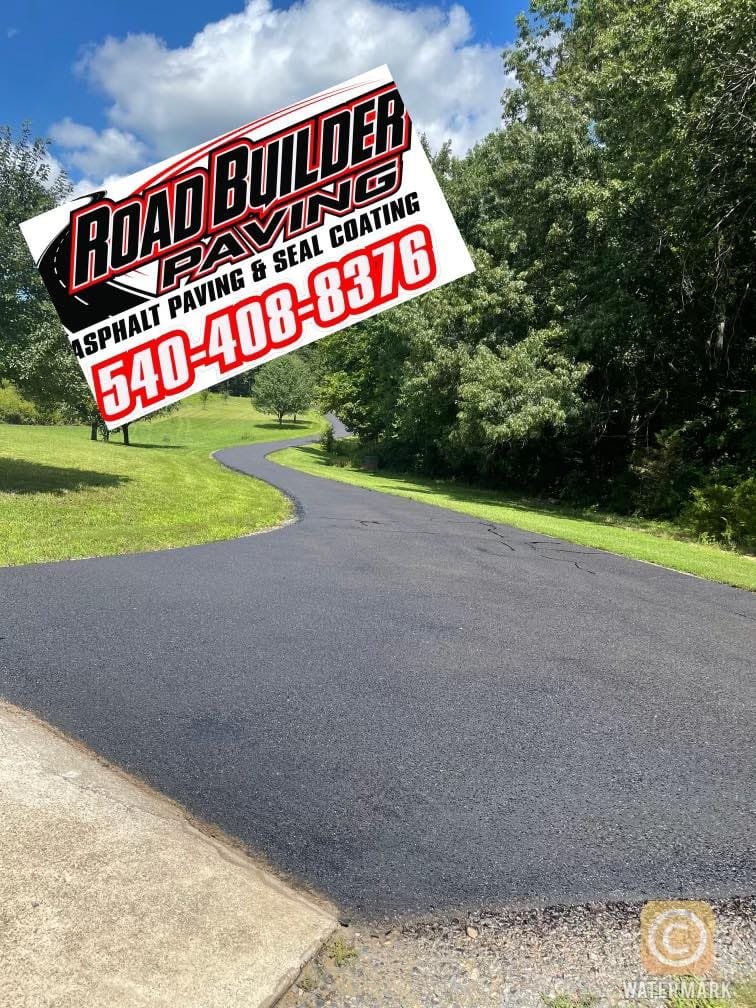Why Asphalt Cracks and How You Can Prevent It

If you’ve got a paved driveway, parking area, or walkways on your property, you’ve probably seen the occasional crack appear. While paving is durable, cost-effective, and meant to last, it’s not invincible. Over time, cracks can start to form, and while they may seem like small problems, if left untreated, they can become much bigger issues.
In this guide, we’ll explore the common reasons why cracks form in paved surfaces and what steps homeowners can take to prevent them. By understanding the causes and taking the right preventative actions, you can extend the lifespan of your pavement and keep it in great condition for years to come.
Why Does Pavement Crack?
Cracking doesn’t happen overnight. It’s the result of various factors that work together over time. Here’s a closer look at the most common causes of cracking in paved surfaces and the science behind it.
1. Weather Conditions
Temperature Fluctuations: The surface expands when temperatures rise and contracts when they fall. This constant cycle of expansion and contraction weakens the material, eventually causing cracks to form.
Freeze-Thaw Cycles: In areas with cold winters, pavement is at a higher risk of damage. Water seeps into the surface and freezes when temperatures drop. The freezing water expands, causing pressure within the material and leading to cracks.
Sun Exposure: The sun’s UV rays can break down the materials in the surface, making it more brittle over time. With prolonged exposure, the surface dries out, loses flexibility, and becomes more likely to crack.
2. Heavy Traffic and Weight
Frequent Vehicle Use: While paved surfaces are designed to handle traffic, constant use, especially by heavier vehicles, puts additional strain on them. This repeated stress can result in cracks, especially if the surface wasn’t built to withstand such weight.
Repetitive Stress: Even lighter traffic, such as regular driving or parking, can gradually create wear on the surface. Over time, this repetitive action contributes to the formation of cracks.
3. Improper Installation or Poor Materials
Low-Quality Materials: Not all paving materials are created equal. Low-quality mix or improperly mixed materials can lead to a weaker surface that’s more prone to damage.
Poor Installation: Pavement that’s laid down improperly can cause early damage. This might include having a base layer that’s too thin or not well-compacted, making the surface more vulnerable to cracks.
4. Lack of Maintenance
Neglecting Minor Damage: Small cracks and surface imperfections may seem insignificant at first, but ignoring them allows them to worsen over time. If left unaddressed, small cracks will eventually become larger, more costly issues.
Skipping Protective Coatings: Protective coatings add an extra layer of defense against the elements. Without sealcoating, the surface becomes more vulnerable to damage from water, oils, and UV rays, which can lead to cracking.
5. Problems with the Subsurface
Soil Movement: The ground beneath your paved surfaces is constantly shifting. If the soil isn’t compacted properly before paving, or if there’s excessive moisture beneath the surface, this movement can push and pull on the material above, leading to cracks.
Water Drainage: Poor drainage is another major factor. Water that pools around or under your paved surface can weaken it. If the water isn’t properly directed away, it can erode the material, causing it to crack and deteriorate.

Common Types of Cracks and What They Mean
Understanding the type of crack in your surface is essential to figuring out what needs to be done. Here are some of the most common crack types and what they indicate about your surface’s condition.
Hairline or Surface Cracks
These are shallow, narrow cracks that form on the surface. They are usually an early sign of aging and can be repaired easily if caught early.
Edge Cracks
These cracks form along the edges of the surface. They are often caused by inadequate edge support or improper drainage, which leads to weakness along the perimeter.
Alligator or Fatigue Cracks
This type of cracking looks like a pattern of scales or alligator skin. It often indicates a problem with the underlying base or excessive stress from heavy loads.
Block Cracks
Block cracks appear as large, rectangular patterns. These are usually caused by the drying out of the surface due to temperature fluctuations and prolonged exposure to the sun.
Transverse Cracks
These cracks run perpendicular to the direction of the surface. They’re typically caused by temperature changes that result in expansion and contraction of the material.
Preventing Pavement Cracking
While you can’t prevent every single crack, there’s plenty you can do to reduce the risk and extend the life of your paved surfaces. Here are some simple but effective ways to prevent damage.
Regular Sealcoating
Sealcoating provides a protective layer that shields the surface from moisture, UV rays, and the harsh effects of weather. A fresh coat of sealant every 2–3 years helps keep the surface flexible and strong. Think of it like sunscreen for your pavement—it keeps harmful elements away.
Fix Drainage Problems
One of the most important aspects of maintaining your surface is making sure that water doesn’t accumulate around it. Proper drainage ensures that water flows away from the surface rather than collecting on top or beneath it. Install drainage channels, or adjust the grading of your driveway to direct water away from the pavement.
Repair Cracks Immediately
Don’t let small cracks sit for too long. Once you spot them, fill them in with the right materials to prevent moisture from seeping in and causing further damage. Early repairs can save you a lot of money and prevent the cracks from spreading.
Limit Heavy Traffic
Heavy vehicles like trucks or RVs can cause significant damage to paved surfaces. If you regularly park heavy vehicles, consider reinforcing the surface or using a stronger material that can handle the load.
Regular Cleaning and Maintenance
Keep the surface free of debris, dirt, and chemicals like oil or fuel. These substances can break down the surface and make it more prone to damage. Regular sweeping and occasional power washing can keep the surface clean and in good shape.
Temperature Considerations
In areas with extreme weather, be mindful of temperature-related issues. In winter, avoid using harsh chemicals like rock salt, as they can cause damage to the surface. Instead, consider using alternatives that are safer for the material.
Reinforce the Base Layer
A solid, well-compacted base is crucial for any paved surface. If you’re installing a new driveway or walkway, make sure the subbase is properly prepared. A stable base prevents shifting and reduces the risk of cracks forming.
Resurfacing Older Pavement
If your surface is showing signs of age, resurfacing may be an option. Resurfacing involves applying a new layer of material over the old surface. This can address minor cracking, restore the appearance, and increase the lifespan of your pavement.

Dealing with Cracks: What to Do When You Spot Them
Even with the best maintenance practices, cracks may still appear over time. Knowing when to act and how to handle the cracks is key to keeping your surface in top condition.
Inspect Regularly
Regularly check your paved surfaces for cracks, stains, and other signs of wear. Spring and fall are ideal times to do this, as they come right before and after the most extreme weather conditions.
Act Quickly on Small Cracks
If you notice any cracks, no matter how small, take action right away. Use crack filler or patching compound to seal them before they can grow. Left untreated, small cracks can quickly become much larger, more costly repairs.
Consult a Professional for Major Damage
If you’re dealing with significant damage, such as large alligator cracks or extensive wear, it’s best to call in a professional. They can help assess the situation and recommend the best course of action, whether it’s repairing, resurfacing, or replacing the surface entirely.
Conclusion
Paved surfaces like driveways and walkways are a great investment for your home, but they require regular care and attention to stay in good condition. Cracks are often the result of natural wear and external factors like weather, traffic, and the quality of installation. By understanding the causes of cracks and taking the right steps to prevent them, you can keep your paved surfaces looking great and functioning well for years.
With regular sealcoating, prompt repairs, and proper maintenance, you can avoid costly repairs and extend the life of your pavement. While you can’t prevent every crack, you can definitely slow down the damage and enjoy a smooth, safe surface for many years to come.
